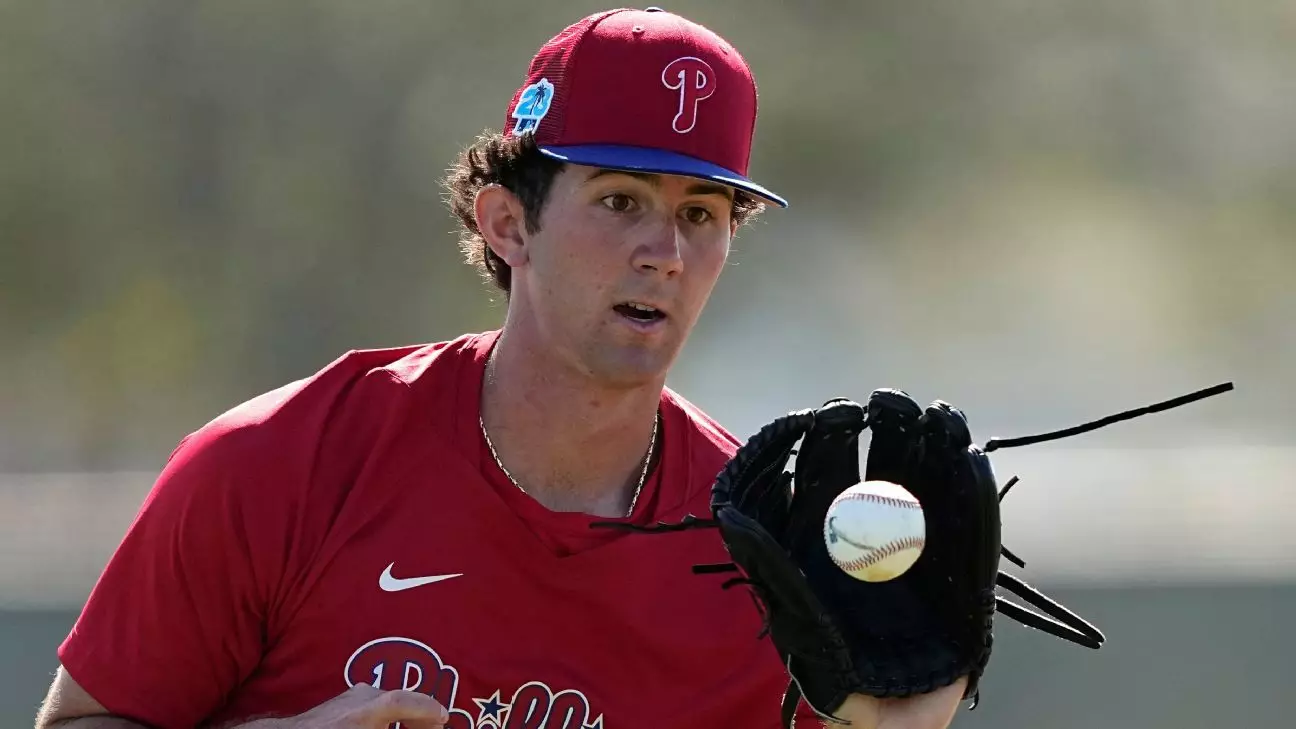The journey of Andrew Painter, one of the Philadelphia Phillies’ brightest pitching prospects, serves as a reminder of how fragile athletic development can be, especially after injury. Painter’s recent decision to skip the All-Star Futures Game to focus on rehabilitation after Tommy John surgery is a prudent move that underscores the importance of long-term health over immediate accolades. Despite his absence from the July 12 showcase at Atlanta’s Truist Park, Painter’s trajectory within the Phillies organization remains hopeful but measured. The organization and fans alike must adjust expectations: although Painter is highly talented, cautious management is necessary to preserve his future potential.
The Price of Progress: Injury and Its Impact
Painter’s elbow injury during spring training in 2023 and subsequent Tommy John surgery could have been a career-altering setback for a young pitcher with such promise. His initial rise through the minor leagues was meteoric, boasting an impressive 6-2 record and 1.48 ERA across multiple levels in 2022. This rapid advancement set high hopes for Painter’s major league debut, potentially as soon as after the All-Star break, contingent on healthy progression. However, injury recovery in baseball, especially following ligament reconstruction, is notoriously unpredictable, and rushing back can lead to recurring issues or diminished performance. Thus, the Phillies’ cautious approach reflects a matured understanding of player development in today’s game.
Statistical Brilliance and What It Predicts
Painter’s 57 strikeouts over 51⅓ innings and the ability to adapt from Single-A to Triple-A competition demonstrate his undeniable skill level. His strikeout rate suggests dominance on the mound that is rare for a 22-year-old, signaling his high ceiling. Historically, a vast majority—around 86.5%—of players who have participated in the Futures Game eventually reach the major leagues. Even more encouraging is that over one-fifth become MLB All-Stars. Although this statistical context paints an optimistic picture, it also places substantial pressure on Painter’s recovery to meet those benchmarks. The Phillies’ investment of a $3.9 million signing bonus and the status as a top draft pick further intensify the spotlight.
Organizational Philosophy: Prioritizing Longevity Over Instant Gratification
Manager Rob Thomson’s comments highlight a healthy organizational philosophy that values Painter’s wellness over a rushed promotion. “He’s got to be healthy. He’s got to be pitching well,” Thomson emphasized, steering clear of speculative timelines. This perspective indicates that, while the Phillies are eager to see Painter contribute at the major league level, they recognize the importance of a sustainable career. In an era where medical advancements have improved recovery outcomes, teams are increasingly cautious, acknowledging that the temptation to accelerate returns can lead to long-term consequences. The Phillies’ patience could ultimately pay dividends by allowing Painter to reach his full potential without compromising his arm.
The Bigger Picture: Evaluating Future Stars Beyond Highlight Moments
Painter’s story exemplifies the broader challenges of nurturing young talent in professional sports. It’s tempting to view prospects through the lens of instant success, especially when they display remarkable early performances. However, the path to the majors is rarely linear, and setbacks are part of the process. By prioritizing rehabilitation and adopting a long-view strategy, the Phillies are not just protecting one player but reinforcing a culture of resilience and responsible player development. Painter’s cautionary but optimistic approach may serve as a model for other organizations managing elite prospects navigating the precarious balance between ambition and health.


Leave a Reply